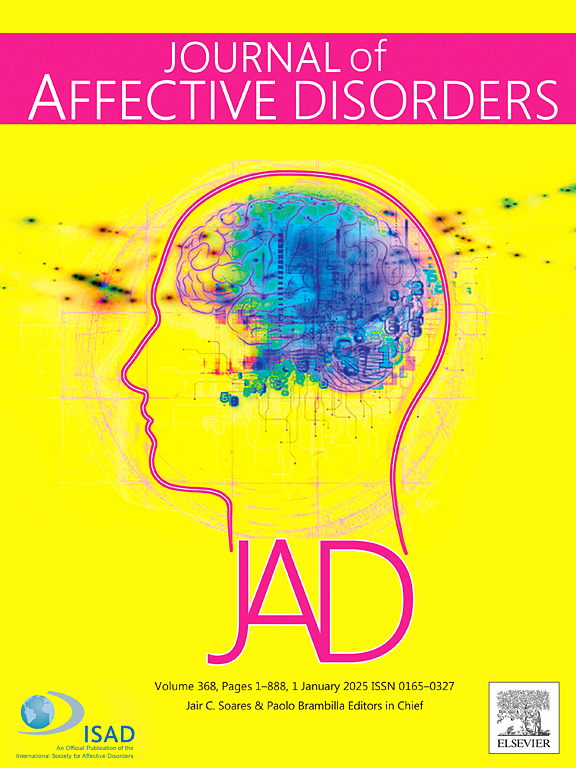The U-shape relationship between the aggregate index of systemic inflammation and depression in American adults: A cross-sectional study
IF 4.9
2区 医学
Q1 CLINICAL NEUROLOGY
引用次数: 0
Abstract
Background
This investigation aims to examine the connection between the aggregate index of systemic inflammation (AISI) and depression, using data from the National Health and Nutrition Examination Survey (NHANES) database.
Methods
We conducted a cross-sectional study using data from the NHANES collected between 2005 and 2018. Depression was assessed via the patient health questionnaire-9. To investigate the connection between AISI and the prevalence of depression, we employed weighted multivariable logistic regression models as well as restricted cubic spline (RCS) models. This study also performed subgroup and interaction analyses to further explore these associations. Additionally, threshold effect and saturation effect analyses were conducted to identify potential inflection points for AISI and depression. Finally, we compared the area under the curve (AUC) values from receiver operating characteristic (ROC) analyses to assess the diagnostic capability of the optimal model for depression.
Results
This study initially recruited 29,092 individuals, of whom 2596 had depression. After adjusting for potential confounders, we discovered a higher AISI was significantly linked with an higher risk of depression when comparing the highest to the lowest quantile of AISI (odds ratio: 1.205; 95 % confidence interval: 1.019–1.424; P = 0.032). Marital status interacted with AISI to influence the prevalence of depression (P for trend = 0.0275). The curve for participants was U-shaped, with an optimal AISI value of 828.8, and a non-linear relationship was found between AISI and depression (P for log-likelihood ratio test <0.001). ROC analysis indicated that AISI had a stronger discriminative ability and accuracy in predicting depression compared to other inflammatory biomarkers.
Conclusions
The AISI level exhibited a U-shaped association with depression, indicating that maintaining AISI within a reasonable range may help reduce the prevalence of depression.
求助全文
约1分钟内获得全文
求助全文
来源期刊

Journal of affective disorders
医学-精神病学
CiteScore
10.90
自引率
6.10%
发文量
1319
审稿时长
9.3 weeks
期刊介绍:
The Journal of Affective Disorders publishes papers concerned with affective disorders in the widest sense: depression, mania, mood spectrum, emotions and personality, anxiety and stress. It is interdisciplinary and aims to bring together different approaches for a diverse readership. Top quality papers will be accepted dealing with any aspect of affective disorders, including neuroimaging, cognitive neurosciences, genetics, molecular biology, experimental and clinical neurosciences, pharmacology, neuroimmunoendocrinology, intervention and treatment trials.
 求助内容:
求助内容: 应助结果提醒方式:
应助结果提醒方式:


